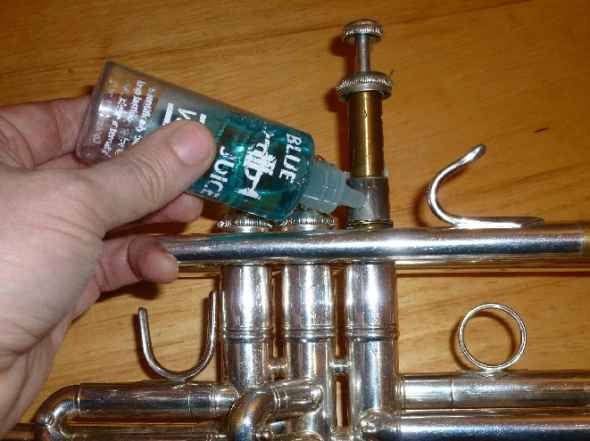How to Oil Trumpet Valves

A trumpet is one of the oldest musical instruments that are still played by many today. In terms of the metal used, it is one of the first few instruments which were made out of brass. Trumpets are played when you blow air from one side by using closed lips. Since you have to blow air into the instrument, you have to make sure that each valve is clean so it can produce the perfect sound. A trumpet needs a good oiling in its valves at least once a week. It’s not difficult to do and you just have to follow the same pattern each time.
Things Required:
– Valve oil
Instructions
-
1
First, you need to disassemble your trumpet. In this case, you will have to open up each and every valve one by one so the trumpet is open and you have all the parts to clean easily. It is advised that you take out one valve at a time, because once finished the user can get confused about each valve’s original position in the instrument.
-
2
Always start off with the first valve. Grab the cap and unscrew it once you have started disassembling your trumpet. Once you are done unscrewing the cap, pull out the valve underneath it. A bit of your first valve is still left inside the last cap which is at the other end of the trumpet. Simply unscrew its cap and pull it out.
-
3
Get yourself any good valve oil and remove its sealing. You must read the instructions before using the valve oil on your trumpet. Some valve oils require large amounts as others work fine with only a few drops.
-
4
Once you have removed the ceiling and the cover, start applying the oil on the different places in the valve. Make sure you do not over-lubricate the valve or you will have to wait for it to dry later on.
-
5
As the oil is on your valve, put it inside the hole in your trumpet and keep moving it in and out. This way the oil will get fully applied to not only your valve, but also to the trumpet itself.
-
6
Now take the valve out and put the cap on the bottom just like before.
-
7
You must put the valve back to its original position by pushing it back in its hole and screwing its cap back on. Keep turning the valve until it makes a clicking sound.
-
8
Use the same procedure for all the valves.
-
9
Grab your trumpet and blow air to check whether the job is complete or not.







